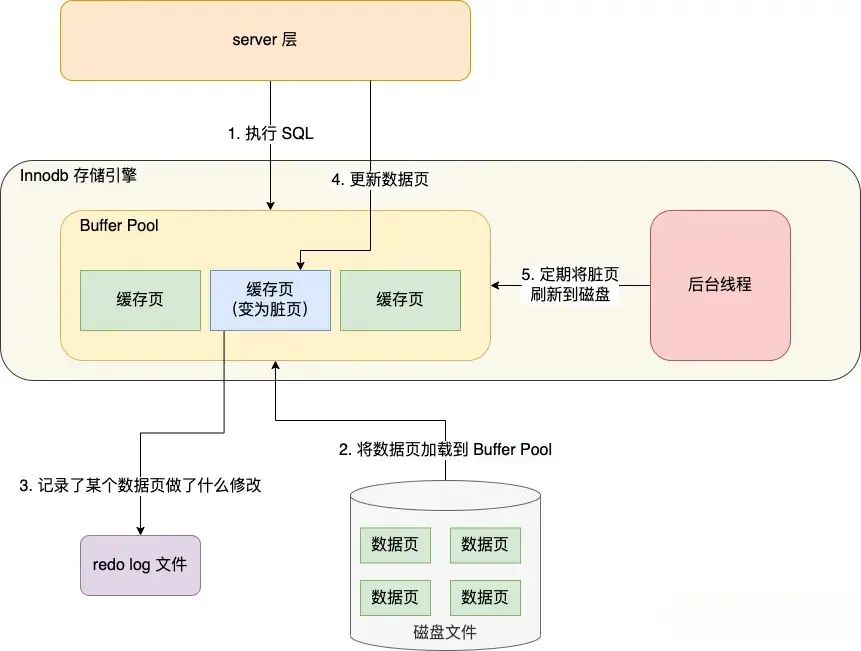1. 简介
Java下载文件是一个常见的任务,通常用于从服务器获取文件,或者在客户端与服务端之间传输文件。
本文将介绍如何使用Java下载文件,包括常用的Java库和下载方法。
![Java文件下载实战指南——常用方法及技巧详解 图片[1]-Java文件下载实战指南——常用方法及技巧详解-不念博客](https://www.bunian.cn/wp-content/uploads/2023/05/u6763684572046369960fm253fmtautoapp138fJPEG.webp)
2. 使用java.net.URL类下载文件
java.net.URL类是Java标准库中的一个类,可以用来从网络上下载文件。
下面是一个简单的示例:
import java.io.BufferedInputStream;import java.io.FileOutputStream;import java.io.IOException;import java.net.URL;public class FileDownload {public static void main(String[] args) {String fileUrl = "https://example.com/file.zip";String outputFileName = "downloaded_file.zip";try (BufferedInputStream inputStream = new BufferedInputStream(new URL(fileUrl).openStream());FileOutputStream fileOutputStream = new FileOutputStream(outputFileName)) {byte[] dataBuffer = new byte[1024];int bytesRead;while ((bytesRead = inputStream.read(dataBuffer, 0, 1024)) != -1) {fileOutputStream.write(dataBuffer, 0, bytesRead);}} catch (IOException e) {e.printStackTrace();}}}import java.io.BufferedInputStream; import java.io.FileOutputStream; import java.io.IOException; import java.net.URL; public class FileDownload { public static void main(String[] args) { String fileUrl = "https://example.com/file.zip"; String outputFileName = "downloaded_file.zip"; try (BufferedInputStream inputStream = new BufferedInputStream(new URL(fileUrl).openStream()); FileOutputStream fileOutputStream = new FileOutputStream(outputFileName)) { byte[] dataBuffer = new byte[1024]; int bytesRead; while ((bytesRead = inputStream.read(dataBuffer, 0, 1024)) != -1) { fileOutputStream.write(dataBuffer, 0, bytesRead); } } catch (IOException e) { e.printStackTrace(); } } }import java.io.BufferedInputStream; import java.io.FileOutputStream; import java.io.IOException; import java.net.URL; public class FileDownload { public static void main(String[] args) { String fileUrl = "https://example.com/file.zip"; String outputFileName = "downloaded_file.zip"; try (BufferedInputStream inputStream = new BufferedInputStream(new URL(fileUrl).openStream()); FileOutputStream fileOutputStream = new FileOutputStream(outputFileName)) { byte[] dataBuffer = new byte[1024]; int bytesRead; while ((bytesRead = inputStream.read(dataBuffer, 0, 1024)) != -1) { fileOutputStream.write(dataBuffer, 0, bytesRead); } } catch (IOException e) { e.printStackTrace(); } } }
3. 使用Apache HttpClient下载文件
Apache HttpClient是一个流行的Java HTTP客户端库,可以用于下载文件。
以下是使用Apache HttpClient下载文件的示例:
import org.apache.http.HttpEntity;import org.apache.http.client.methods.CloseableHttpResponse;import org.apache.http.client.methods.HttpGet;import org.apache.http.impl.client.CloseableHttpClient;import org.apache.http.impl.client.HttpClients;import org.apache.http.util.EntityUtils;import java.io.FileOutputStream;import java.io.IOException;import java.io.InputStream;public class FileDownload {public static void main(String[] args) {String fileUrl = "https://example.com/file.zip";String outputFileName = "downloaded_file.zip";try (CloseableHttpClient httpClient = HttpClients.createDefault()) {HttpGet httpGet = new HttpGet(fileUrl);try (CloseableHttpResponse response = httpClient.execute(httpGet)) {HttpEntity entity = response.getEntity();if (entity != null) {try (InputStream inputStream = entity.getContent();FileOutputStream fileOutputStream = new FileOutputStream(outputFileName)) {int bytesRead;byte[] buffer = new byte[1024];while ((bytesRead = inputStream.read(buffer)) != -1) {fileOutputStream.write(buffer, 0, bytesRead);}}}EntityUtils.consume(entity);}} catch (IOException e) {e.printStackTrace();}}}import org.apache.http.HttpEntity; import org.apache.http.client.methods.CloseableHttpResponse; import org.apache.http.client.methods.HttpGet; import org.apache.http.impl.client.CloseableHttpClient; import org.apache.http.impl.client.HttpClients; import org.apache.http.util.EntityUtils; import java.io.FileOutputStream; import java.io.IOException; import java.io.InputStream; public class FileDownload { public static void main(String[] args) { String fileUrl = "https://example.com/file.zip"; String outputFileName = "downloaded_file.zip"; try (CloseableHttpClient httpClient = HttpClients.createDefault()) { HttpGet httpGet = new HttpGet(fileUrl); try (CloseableHttpResponse response = httpClient.execute(httpGet)) { HttpEntity entity = response.getEntity(); if (entity != null) { try (InputStream inputStream = entity.getContent(); FileOutputStream fileOutputStream = new FileOutputStream(outputFileName)) { int bytesRead; byte[] buffer = new byte[1024]; while ((bytesRead = inputStream.read(buffer)) != -1) { fileOutputStream.write(buffer, 0, bytesRead); } } } EntityUtils.consume(entity); } } catch (IOException e) { e.printStackTrace(); } } }import org.apache.http.HttpEntity; import org.apache.http.client.methods.CloseableHttpResponse; import org.apache.http.client.methods.HttpGet; import org.apache.http.impl.client.CloseableHttpClient; import org.apache.http.impl.client.HttpClients; import org.apache.http.util.EntityUtils; import java.io.FileOutputStream; import java.io.IOException; import java.io.InputStream; public class FileDownload { public static void main(String[] args) { String fileUrl = "https://example.com/file.zip"; String outputFileName = "downloaded_file.zip"; try (CloseableHttpClient httpClient = HttpClients.createDefault()) { HttpGet httpGet = new HttpGet(fileUrl); try (CloseableHttpResponse response = httpClient.execute(httpGet)) { HttpEntity entity = response.getEntity(); if (entity != null) { try (InputStream inputStream = entity.getContent(); FileOutputStream fileOutputStream = new FileOutputStream(outputFileName)) { int bytesRead; byte[] buffer = new byte[1024]; while ((bytesRead = inputStream.read(buffer)) != -1) { fileOutputStream.write(buffer, 0, bytesRead); } } } EntityUtils.consume(entity); } } catch (IOException e) { e.printStackTrace(); } } }
4. 使用Java NIO下载文件
Java NIO(New I/O)提供了一种更高效的I/O处理方式,可以用于下载文件。
以下是使用Java NIO下载文件的示例:
import java.io.IOException;import java.net.URL;import java.nio.channels.Channels;import java.nio.channels.ReadableByteChannel;import java.nio.file.Files;import java.nio.file.Path;import java.nio.file.Paths;import java.nio.file.StandardOpenOption;public class FileDownload {public static void main(String[] args) {String fileUrl = "https://example.com/file.zip";String outputFileName = "downloaded_file.zip";try (ReadableByteChannel readableByteChannel = Channels.newChannel(new URL(fileUrl).openStream())) {Path outputFile = Paths.get(outputFileName);Files.createFile(outputFile);try (FileChannel fileChannel = FileChannel.open(outputFile, StandardOpenOption.WRITE)) {fileChannel.transferFrom(readableByteChannel, 0, Long.MAX_VALUE);}} catch (IOException e) {e.printStackTrace();}}}import java.io.IOException; import java.net.URL; import java.nio.channels.Channels; import java.nio.channels.ReadableByteChannel; import java.nio.file.Files; import java.nio.file.Path; import java.nio.file.Paths; import java.nio.file.StandardOpenOption; public class FileDownload { public static void main(String[] args) { String fileUrl = "https://example.com/file.zip"; String outputFileName = "downloaded_file.zip"; try (ReadableByteChannel readableByteChannel = Channels.newChannel(new URL(fileUrl).openStream())) { Path outputFile = Paths.get(outputFileName); Files.createFile(outputFile); try (FileChannel fileChannel = FileChannel.open(outputFile, StandardOpenOption.WRITE)) { fileChannel.transferFrom(readableByteChannel, 0, Long.MAX_VALUE); } } catch (IOException e) { e.printStackTrace(); } } }import java.io.IOException; import java.net.URL; import java.nio.channels.Channels; import java.nio.channels.ReadableByteChannel; import java.nio.file.Files; import java.nio.file.Path; import java.nio.file.Paths; import java.nio.file.StandardOpenOption; public class FileDownload { public static void main(String[] args) { String fileUrl = "https://example.com/file.zip"; String outputFileName = "downloaded_file.zip"; try (ReadableByteChannel readableByteChannel = Channels.newChannel(new URL(fileUrl).openStream())) { Path outputFile = Paths.get(outputFileName); Files.createFile(outputFile); try (FileChannel fileChannel = FileChannel.open(outputFile, StandardOpenOption.WRITE)) { fileChannel.transferFrom(readableByteChannel, 0, Long.MAX_VALUE); } } catch (IOException e) { e.printStackTrace(); } } }
5. 使用OkHttp下载文件
OkHttp是一个现代、高效的HTTP客户端库,可以用于下载文件。
以下是使用OkHttp下载文件的示例:
import okhttp3.OkHttpClient;import okhttp3.Request;import okhttp3.Response;import java.io.FileOutputStream;import java.io.IOException;import java.io.InputStream;public class FileDownload {public static void main(String[] args) {String fileUrl = "https://example.com/file.zip";String outputFileName = "downloaded_file.zip";OkHttpClient client = new OkHttpClient();Request request = new Request.Builder().url(fileUrl).build();try (Response response = client.newCall(request).execute()) {if (response.isSuccessful()) {try (InputStream inputStream = response.body().byteStream();FileOutputStream fileOutputStream = new FileOutputStream(outputFileName)) {byte[] buffer = new byte[1024];int bytesRead;while ((bytesRead = inputStream.read(buffer)) != -1) {fileOutputStream.write(buffer, 0, bytesRead);}}}} catch (IOException e) {e.printStackTrace();}}}import okhttp3.OkHttpClient; import okhttp3.Request; import okhttp3.Response; import java.io.FileOutputStream; import java.io.IOException; import java.io.InputStream; public class FileDownload { public static void main(String[] args) { String fileUrl = "https://example.com/file.zip"; String outputFileName = "downloaded_file.zip"; OkHttpClient client = new OkHttpClient(); Request request = new Request.Builder().url(fileUrl).build(); try (Response response = client.newCall(request).execute()) { if (response.isSuccessful()) { try (InputStream inputStream = response.body().byteStream(); FileOutputStream fileOutputStream = new FileOutputStream(outputFileName)) { byte[] buffer = new byte[1024]; int bytesRead; while ((bytesRead = inputStream.read(buffer)) != -1) { fileOutputStream.write(buffer, 0, bytesRead); } } } } catch (IOException e) { e.printStackTrace(); } } }import okhttp3.OkHttpClient; import okhttp3.Request; import okhttp3.Response; import java.io.FileOutputStream; import java.io.IOException; import java.io.InputStream; public class FileDownload { public static void main(String[] args) { String fileUrl = "https://example.com/file.zip"; String outputFileName = "downloaded_file.zip"; OkHttpClient client = new OkHttpClient(); Request request = new Request.Builder().url(fileUrl).build(); try (Response response = client.newCall(request).execute()) { if (response.isSuccessful()) { try (InputStream inputStream = response.body().byteStream(); FileOutputStream fileOutputStream = new FileOutputStream(outputFileName)) { byte[] buffer = new byte[1024]; int bytesRead; while ((bytesRead = inputStream.read(buffer)) != -1) { fileOutputStream.write(buffer, 0, bytesRead); } } } } catch (IOException e) { e.printStackTrace(); } } }
6. 小结
本文介绍了使用Java下载文件的几种常用方法,包括使用java.net.URL类、Apache HttpClient、Java NIO和OkHttp库。
根据具体需求和项目依赖,您可以选择合适的方法来下载文件。
在实际开发中,还需注意异常处理和资源释放,以确保代码的稳定性和可靠性。
© 版权声明
本站文章由不念博客原创,未经允许严禁转载!
THE END











